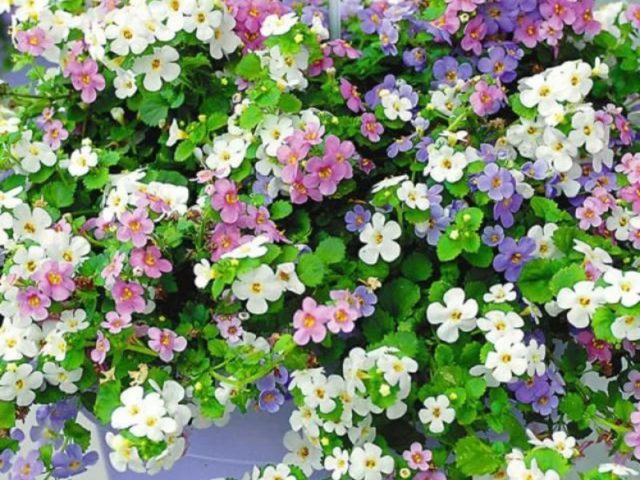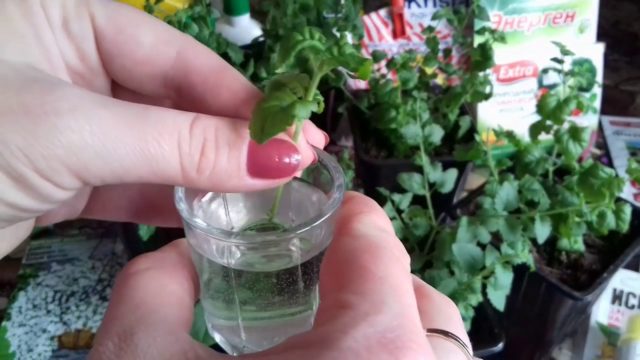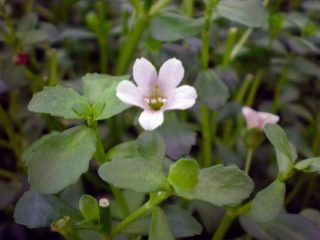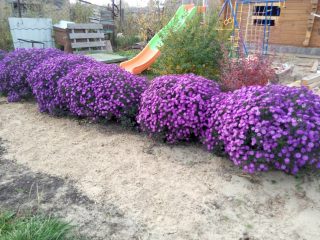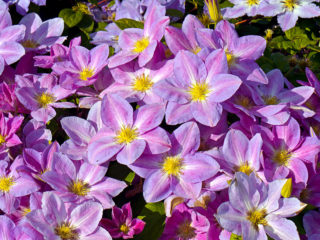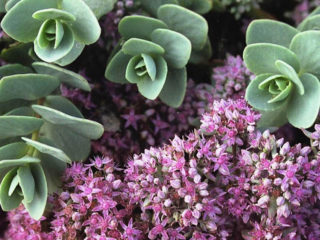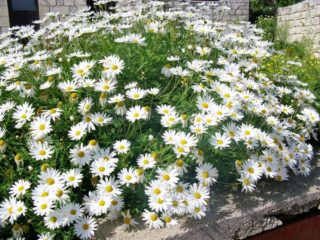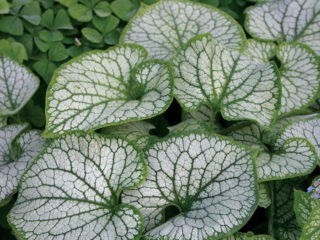Content
Bacopa is a South American plant that blooms continuously from May to October. A domesticated version appeared in 1993. Another name for the flower is suttera. Caring for and growing bacopa is not difficult, since this ground cover plant is quite unpretentious.
What does bacopa look like?
This is a creeping herbaceous plant, the length of its shoots does not exceed 60 cm. The stems are drooping, flexible, thin and long, densely strewn with small flowers. They grow quickly on the soil surface, forming a dense carpet. The height of the perennial does not exceed 15 cm.
The leaves are miniature, oblong, ovate or broadly oval in shape. Their edges are covered with small serrations, the color of the leaf blade is pale green. The leaves grow in pairs and densely cover the shoot.
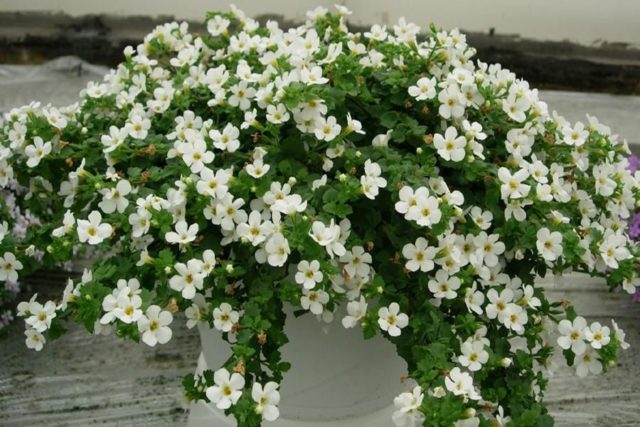
The plant blooms for a long time, abundantly from May to October.
The flowers are small, formed in the axils of the leaves. The corolla is regular in shape and consists of 5 petals fused at the base. The diameter of the flower does not exceed 2 cm. In its center there are short yellow stamens. Depending on the variety of bacopa, the color of the buds can be white, pink, red, blue, or lilac. After flowering, in place of the buds, small, dry, flattened boxes are formed, filled with a huge number of dusty seeds.
Types of Bacopa
There are approximately 60 species in the genus Bacopa. Based on them, breeders develop new varieties. They are distinguished by brighter and more varied bud colors. There is bacopa with buds of blue, pink and white flowers.
The disadvantage of these plant varieties is that after pollination, after several flowerings they turn white.
Giant Snowflake - a large plant with long meter-long shoots. Suitable for growing in hanging pots. Blooms profusely for several months. Caring for the variety is simple.

In relation to the size of the shrub, the flowers of the plant are quite small
Bluetopia – perennial with short (up to 30 cm) shoots and lavender-colored buds. The leaves are small, olive, the flowering is lush and long-lasting.
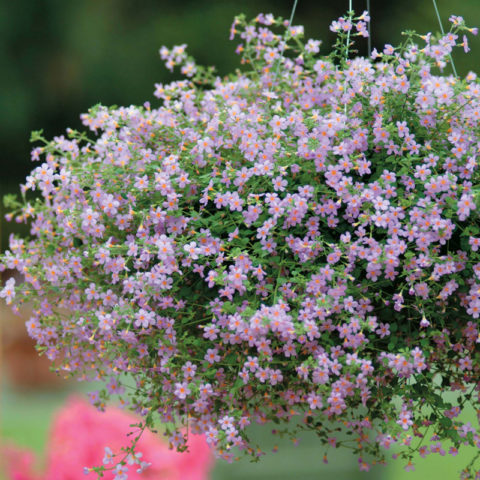
Bluetopia grows well and looks good in flowerpots, boxes, balcony planters
Olympic Gold - a herbaceous perennial plant whose leaves are cast in gold. The length of the shoots does not exceed 60 cm, the flowers are small, white, and densely cover the branches.
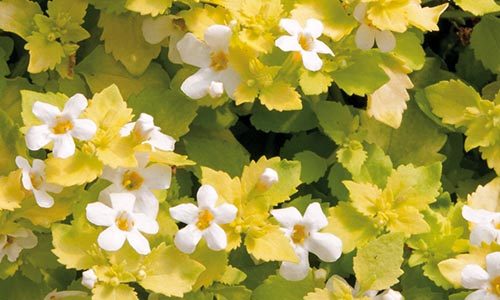
Olympic Blue is unpretentious and disease resistant
Snowstorm Blue - a large perennial whose shoots grow up to 100 cm. The leaves are medium-sized, dark green.The flowers are bluish-lilac with a bright yellow core, densely covering the entire surface of the shoots.
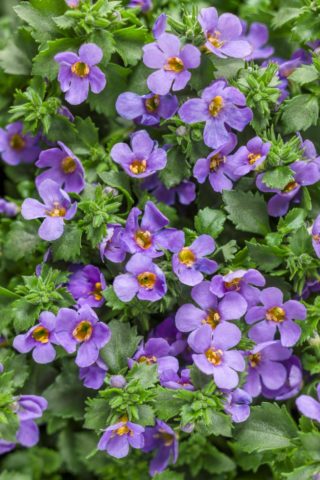
Snowstorm Blue - a hybrid variety of ampelous bacopa
Scopia Double Blue is a variety of ampelous bacopa with short stems up to 40 cm. The flowers are pinkish-lilac in color, the leaves are dark green.
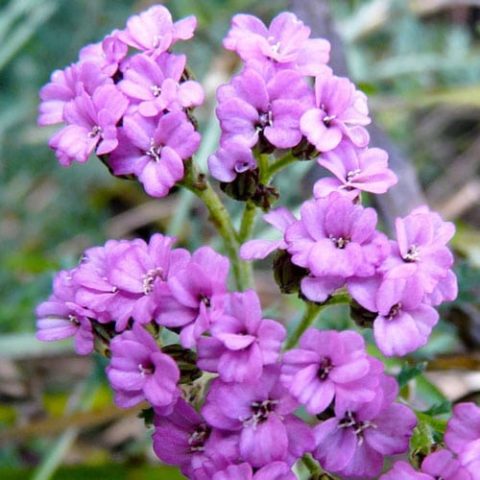
Thanks to its compact size, this bacopa looks great in hanging pots and planters.
How to grow and care for bacopa at home
Bacopa is a moisture-loving plant that needs frequent watering. Otherwise, the plant is unpretentious; even novice gardeners can grow bacopa correctly.
When to plant bacopa at home
Bacopa is sown in March in containers or flower pots. They are filled with slightly acidic, loose, fertile soil.
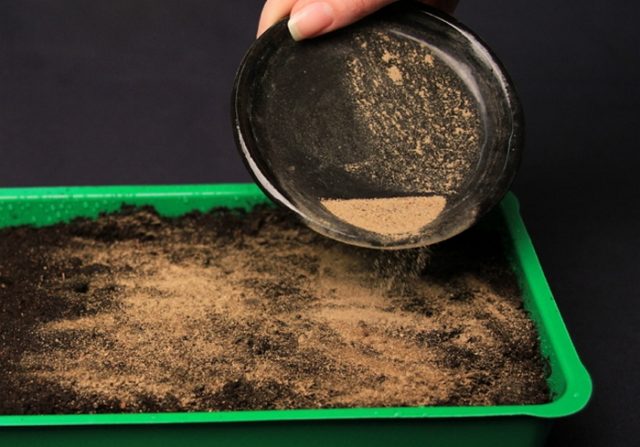
The seed material is ground with sand and scattered on the soil surface
Bacopa seeds are sprouted indoors, not outside. Grown seedlings are transplanted into open ground or into balcony flowerpots in early or mid-May, depending on the growing region.
Location and lighting
Pots with planting material are placed on window sills. Bacopa loves good lighting. As soon as it gets hot, the plant can be shaded, but you should not put it in a dark room: the flowering will weaken and the green part of the bush will grow greatly.
Watering
It is correct to plant bacopa immediately in moist soil or sand. Then every 2-3 days the seeds are moistened with a spray bottle, the same applies to grown plants. In winter, you should avoid watering bacopa.
Temperature and humidity
Bacopa tolerates sudden changes in temperature well. It can be grown on the balcony from early spring until late autumn. In winter, the plant is removed to a warm room protected from the winds.During this period, all biological processes are inhibited.
Regular watering (at least 3 times a week) will provide the moisture necessary for bacopa. On particularly hot days, the flower is additionally sprayed with a spray bottle.
Top dressing
Bacopa is fed in spring and summer. For these purposes, organic and complex mineral fertilizers are alternately used. Liquid fertilizers are also needed for flowering crops. They can be added every 10 days.
Trimming
As soon as the bush begins to bloom sparingly, the stems are pruned and the shoots are pinched. Excessively long lashes are shortened and aligned in length. The tops of young shoots are pinched, stimulating the growth of new branches and abundant flowering.
Bacopa care: growing conditions in the garden
You can grow bacopa from seeds. The main thing is to sow bacopa correctly in cups or containers in March. Grown seedlings are rooted in open ground in early May.
When to sow
To plant bacopa on a personal plot, its seeds are first germinated. The process begins in the first half of March. In the southern regions, seeds can be immediately planted in open ground at the end of March, when the soil has already warmed up.
In the central regions and the north, hardened seedlings are rooted in the garden at the end of May, as soon as the threat of frost has passed.
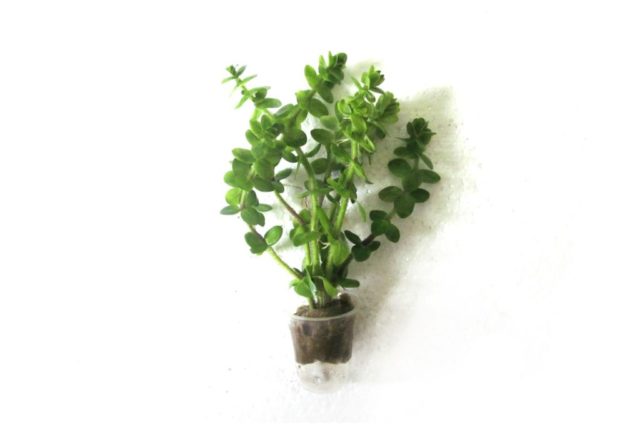
The seedlings are hardened off beforehand: they are taken outside for an hour.
Gradually, the hardening time is increased until the plants can stay in the fresh air for days.
Where to plant
Bacopa is planted in open, well-lit areas, protected from the wind.
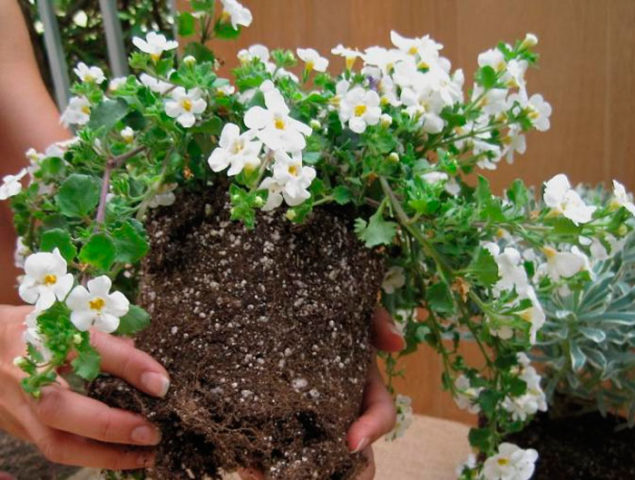
Exposure to direct sunlight should not be allowed, the light should be diffused
Slight shading is acceptable, but bacopa cannot be completely protected from the sun.In temperate climates, the crop is not grown as a perennial; it is dug up for the winter; it is important to take this point into account before planting. You can learn more about the process of growing bacopa in the video:
Watering
Bacopa loves moisture. The soil under the plant should always be well watered; short-term flooding is allowed.
After watering, the soil is loosened; bacopa grows in light, well-drained soils.
Top dressing
Without fertilization, the crop is greatly depleted during the flowering period. Fertilizing is applied in spring and the first half of summer. It is better to use fertilizers in liquid form: a solution of mullein or bird droppings. Liquid complex mineral fertilizers are applied 2-3 times per season.
Trimming
To preserve the splendor of the bush, the ends of the shoots are pinched. Apical cuttings can be used to propagate the crop. How the process of propagating bacopa by cuttings occurs will be shown by an experienced gardener in the video:
Shoots that are too long and stand out from the general green mass are cut off with pruning shears. As soon as the lower shoots become hard and covered with bark, they are shortened by a third.
Features of seasonal care
Bacopa is a perennial plant, but in regions with cold winters it becomes an annual plant. The flower is dug up in the fall, transplanted into a flowerpot, and transferred to a closed, cool room until spring. The air temperature should not rise above + 15 ᵒС. The flower does not need frequent watering in winter; 1-2 moistenings per month are enough.
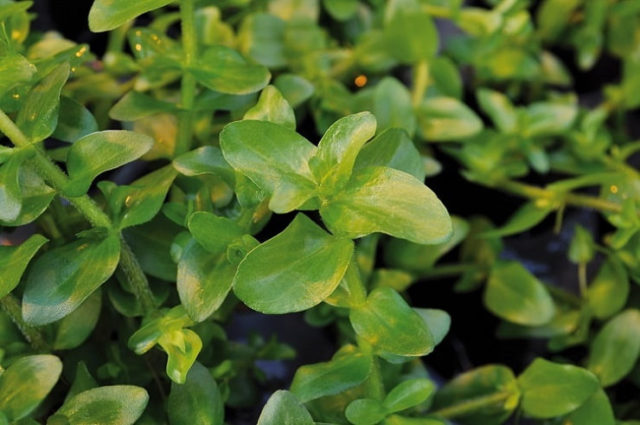
In autumn, faded buds are not removed, they fall off on their own, after which the plant enters a dormant state, ready for wintering
Flowering period
During flowering, special attention is paid to watering and fertilizing. Each plant requires at least 2 liters of water every 2 days. Bacopa responds well to complex mineral supplements. Irrigation solutions are prepared from them. A month before the buds appear, the plant is fertilized every 10 days.
Reproduction
Bacopa ampelous propagates in 3 ways: cuttings, layering, and seeds. Each of these methods is applicable on the farm and does not require special skills.
Growing from seeds
First of all, the smallest bacopa seeds are mixed with dry sand. This makes it easier to scatter them over the surface of the soil.
How to sow a bacopa flower:
- Mix peat, turf soil, river sand and humus in equal parts.
- Calcine the resulting soil mixture in the oven for 3 hours to disinfect.
- Place seeds mixed with sand on the surface of leveled, cooled, moistened soil.
- The filled container is covered with cling film and placed in a bright, warm place.
It is important to observe the temperature regime: the thermometer should not fall below + 20 ᵒC. Periodically, the seeds are sprayed with a spray bottle. After 2 weeks, the first shoots will appear.
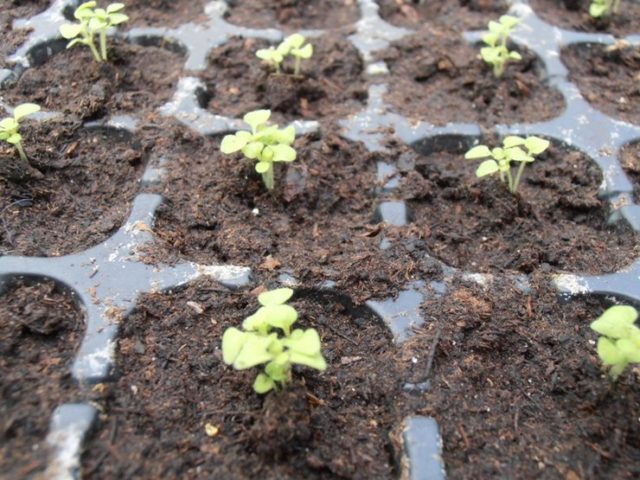
As soon as 2 true leaves appear on the seedlings, the film is removed
Hatched plants are planted in larger containers. From now on, the flower is fed with ready-made fertilizers for seedlings, diluted in water.
As soon as the seedlings get stronger, they are transplanted into flowerpots. A week later, bacopa is fed again.
Young shoots
To begin with, prepare large boxes and fill them with loose fertile soil. The containers are placed close to the bacopa bush, its long shoots are laid out on the surface of the soil in a box and pressed tightly.A new root system will develop where the soil and plant touch.
As soon as the root shoots are well developed, the young plants are cut off from the mother bush and transplanted to a new place. Caring for children is no different from the basic rules.
How to propagate bacopa from cuttings
For these purposes, apical cuttings of bacopa are used. They remain in large quantities after the pinching procedure.
Algorithm of actions:
- The cuttings are cut so that 2 pairs of leaves remain on them, the length of the plant is 10 cm.
- A growth or root formation stimulator is diluted in water.
- The containers are filled with loose, fertile soil, and the cuttings are rooted in it, deepening the stem to the second pair of leaves.
- The plants are watered, covered with film, and placed in a warm, bright place.
- As soon as new leaves appear, the film is removed.
Young plants are cared for in the same way as seedlings.
Bacopa care in winter
The plant does not tolerate wintering in open ground. The flower must be dug up, transplanted into a flower pot and placed in a bright, cool room. The air temperature in it should not rise above + 15 ᵒС and fall below + 8 ᵒС. Water the flower rarely.
Diseases and pests
If growing conditions are not met, bacopa suffers from fungal diseases: gray rot, mold. Treatment: the crown is thinned out, the plant is treated with a fungicide solution twice with an interval of 14 days.
Whiteflies, spider mites, and aphids are dangerous for bacopa. Acaricidal drugs are used to combat them. Processing is carried out in 2 or 3 stages.
Photo of bacopa in landscape design
Bacopa looks good as a ground cover plant. The flower is grown on small lawns or alpine hills.
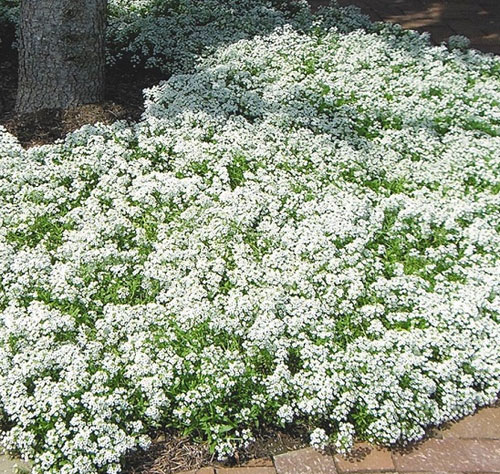
The dense plant completely covers the soil, leaving no bare areas
Vases with bacopa are used to decorate an artificial pond, fountain, gazebo.
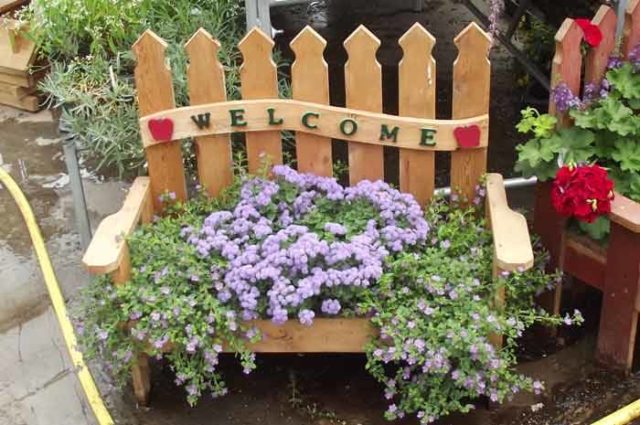
Wooden flowerpots in the form of a bench - an original, fresh solution
Bacopa is also suitable for vertical gardening. You can decorate not only verandas, loggias, balconies with plants, but also low vertical buildings.
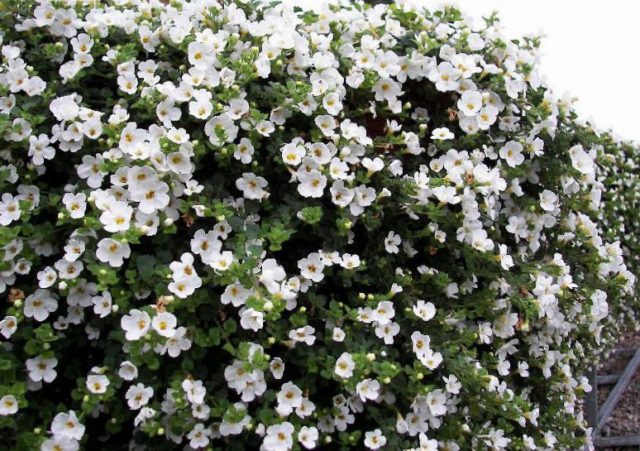
Plant varieties with large flowers look especially good in vertical compositions
Photos without master classes from designers will help you decide on planting and caring for bacopa, and its correct placement on your garden plot.
Conclusion
Caring for and growing bacopa is an interesting activity for real gardeners. The culture reproduces well in several ways, takes root easily, and blooms quickly. If desired, the flower can be used as a perennial or young bushes can be grown every year.
